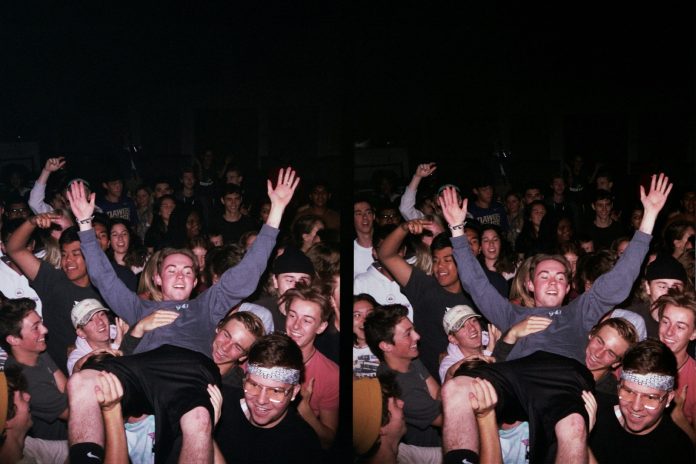Each year, music fans around the world mark their calendars, set phone alerts, and join online queues that stretch across time zones—all for one reason: tour season. It’s not just about watching an artist perform; it’s about being there—in the moment, in the crowd, singing lyrics alongside thousands of others. Tours have become cultural events, economic powerhouses, and in many ways, emotional lifelines for fans craving connection after years of isolation and disruption.
In 2025, the anticipation is sky-high. From global pop juggernauts to legendary rock reunions, this year’s concert calendar is shaping up to be one of the most dynamic, diverse, and in-demand in recent memory. But why this year? And what is it about these tours that have fans clamoring for tickets before dates are even announced?
Let’s dive deep into the atmosphere of tour fever, examining what makes 2025’s live music lineup so electrifying and why these events matter more than ever.
The Return of the Stage: Post-Pandemic Energy Hits Its Peak
Though the pandemic is now largely behind us, the live music industry is still riding the emotional aftershocks. Years of cancellations, postponements, and virtual concerts created a vacuum of live experience. When artists returned to the road in 2022 and 2023, it wasn’t just business as usual—it was a global celebration.
Now in 2025, we’re seeing the full flowering of that momentum. Artists who delayed projects or skipped tours are now returning in full force, many with new albums, new visuals, and entirely new performance formats. Fans, meanwhile, are no longer taking tours for granted. They’re more willing to travel, spend, and wait—just to get a slice of that once-in-a-lifetime energy.
Global Icons, Global Demand
Some of the most anticipated names hitting the road this year aren’t just artists—they’re movements.
Take Taylor Swift, for instance. After the groundbreaking success of her “Eras Tour,” the pop powerhouse is back with a reimagined leg of the tour, rumored to include surprise international collaborations and an even deeper dive into her decade-spanning discography. Swift’s touring approach—telling a story with stage design, song order, and costume changes—has elevated her concerts into fully immersive narratives.
Then there’s BTS, or at least parts of it. As some members complete military service, solo and subunit tours are keeping the ARMY engaged globally. Whether it’s Jimin’s solo shows in Paris or Jungkook’s dance-heavy sets in Los Angeles, each performance feels like a historic moment for fans who’ve waited years for live contact.
And of course, Beyoncé’s Renaissance Tour continues to ripple into 2025. The visuals, the choreography, the fashion—it’s not just a concert; it’s a statement on power, identity, and excellence.
These tours aren’t just events; they’re movements, often influencing fashion trends, viral challenges, and even academic discourse. Fans don’t just want tickets—they want proof they were there.
Comebacks, Farewells, and Reunions
Anticipation isn’t always about newness—sometimes it’s about nostalgia. And 2025 is full of tours that are tugging at heartstrings.
Green Day is celebrating the 30th anniversary of Dookie and Insomniac, launching a dual-album tour that’s as much punk history lesson as it is mosh-pit mayhem. For millennials who grew up on “Basket Case” and “When I Come Around,” this tour is a bridge to the past.
No Doubt shocked the industry by announcing a reunion tour—yes, with Gwen Stefani back in the fold. It’s the first time in over a decade the band has played together, and fans are scrambling to relive the ska-pop explosion that once ruled the late ‘90s.
Meanwhile, Adele’s rumored “One Last Tour” has fans speculating whether this will be her final global run. If true, it adds an emotional intensity to every performance—a chance to say goodbye (or at least, see you later).
These kinds of tours carry a weight that goes beyond music. They’re goodbyes, reunions, and celebrations all rolled into one, often blurring the line between performer and audience.
Genre Expansions: Tours Go Global and Diverse
Another reason 2025 feels like a landmark year? Genre boundaries are being obliterated.
Afrobeats is exploding globally, and artists like Burna Boy, Wizkid, and Tems are launching major tours not just in Africa and Europe, but across North and South America. The rhythms, the fashion, and the storytelling are magnetic—and the demand is unprecedented.
Latin music continues its global rise too. With Bad Bunny returning to arenas after a quiet 2024, and Karol G booking stadiums in Asia for the first time, the language of live music is expanding. It’s no longer just English-language acts that dominate the “most anticipated” lists—cultural influence is now multilingual, multisensory, and multigenerational.
And let’s not forget the metal resurgence. With Metallica, Slipknot, and Tool announcing overlapping festival runs, 2025 is shaping up to be a year where headbanging returns with both nostalgia and fresh energy.
The Ticket Hunt: Scarcity Breeds Desire
Of course, part of what fuels anticipation is the chase itself.
Ticketing platforms have become battlegrounds, with fans refreshing pages at lightning speed, battling bots, and navigating complicated presale codes. The harder it is to get in, the more valuable the experience feels. Psychologically, scarcity creates value—and nowhere is that more evident than in live music.
Dynamic pricing, VIP tiers, and resale markets have further added layers of complexity. Some fans plan for months in advance—creating spreadsheets, setting alarms, and forming groups to increase odds of scoring decent seats.
And yet, even with all this hassle, they keep trying. Because being there, really being there, is worth the chaos.
More Than Music: The Experience Economy
What these tours ultimately reflect is the rise of the experience economy. In an era where attention is fragmented and content is infinite, live events offer something digital can’t: physical, shared presence. You can stream music anytime—but you can’t stream the sound of 70,000 fans losing their minds in unison.
Modern tours often go beyond music, integrating art installations, branded food and drink, pop-up shops, fan lounges, and augmented reality. For artists, it’s a chance to build worlds. For fans, it’s a portal out of daily life.
Whether it’s watching drones form constellation patterns during a Coldplay encore or crying during a stripped-down Ed Sheeran ballad, the moments linger long after the lights come up.


